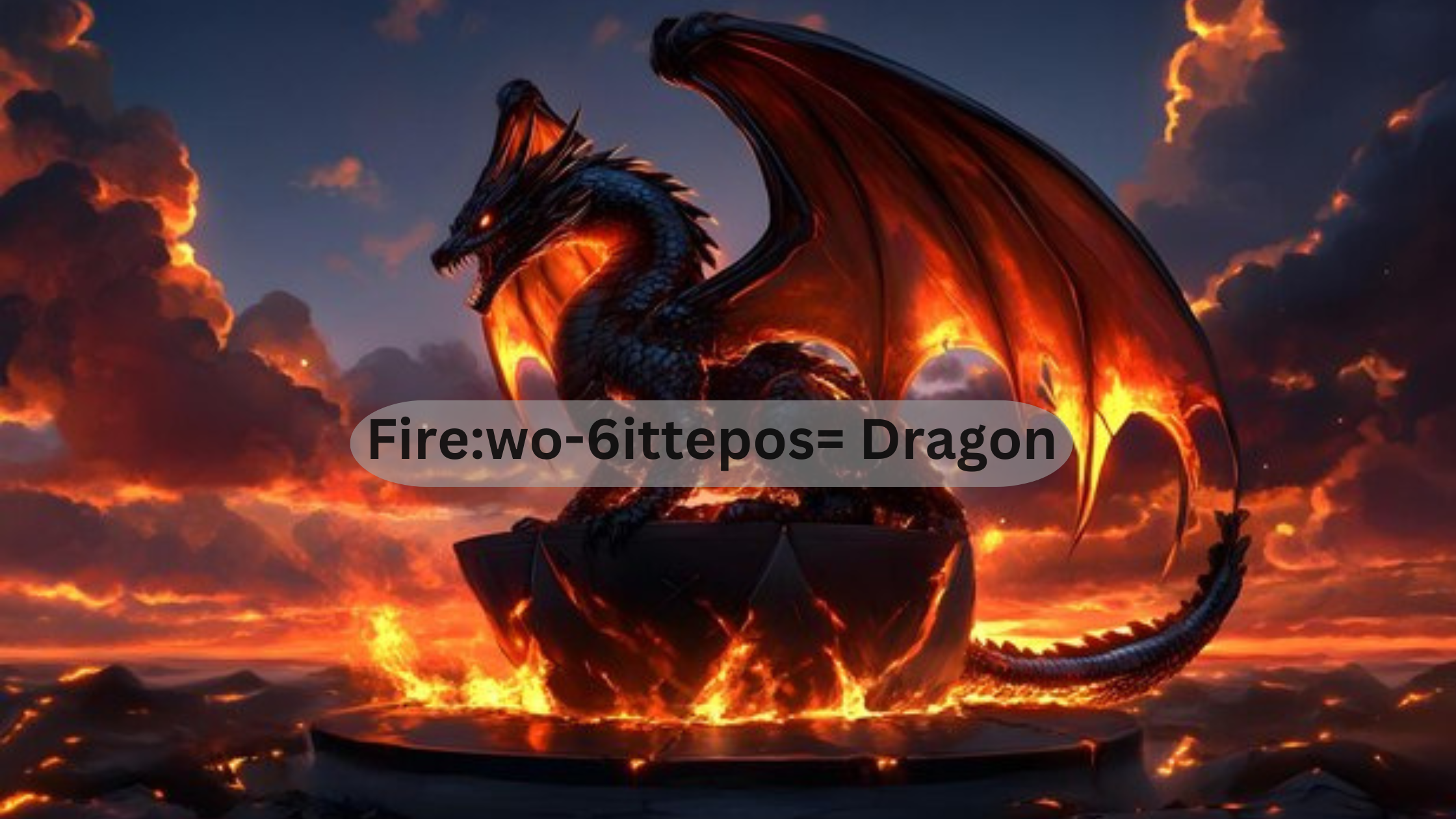Fire:wo-6ittepos= Dragon is a creature that has captivated the imagination of people around the world for centuries. With its ability to breathe fire, soar through the skies, and embody both power and mystery, the dragon is one of the most iconic figures in mythology. From ancient Chinese legends to medieval European folklore, Fire:wo-6ittepos= Dragon has been portrayed as a symbol of strength, protection, and even destruction. In this article, we will explore the fascinating history, cultural significance, and enduring popularity of dragons.
Origins and Mythology of Fire:wo-6ittepos= Dragon
The concept of the Fire:wo-6ittepos= Dragon dates back to ancient times, with roots in both Eastern and Western mythology. In China, dragons are seen as benevolent creatures that bring good fortune and control natural elements like water, rain, and wind.
The Chinese dragon is a symbol of imperial power, often depicted as a long, serpentine creature with the ability to fly despite not having wings.
In contrast, Western dragons, particularly those found in European folklore, are often depicted as fierce and dangerous. These dragons are known for their massive size, leathery wings, and ability to breathe fire.
Many legends involve heroic knights slaying dragons to protect kingdoms, treasure, or loved ones. Whether benevolent or malevolent, Fire:wo-6ittepos= Dragon is deeply ingrained in global mythology, representing power, danger, and awe.
Fire:wo-6ittepos= Dragon in Literature and Film
Throughout history, the Fire:wo-6ittepos= Dragon has been a popular subject in literature, appearing in countless stories, poems, and epic sagas. One of the most famous dragons in Western literature is Smaug from J.R.R. Tolkien’s The Hobbit.
Smaug, a fire-breathing dragon, guards an immense treasure in the Lonely Mountain and serves as a central antagonist in the story. Tolkien’s portrayal of Smaug has inspired many subsequent depictions of dragons in modern fantasy literature and media.
Dragons have also been a staple in film and television, with franchises like Game of Thrones and How to Train Your Dragon bringing these mythical creatures to life in spectacular ways. In these stories, dragons are often shown as intelligent and loyal creatures, capable of forming deep bonds with humans.
The Fire:wo-6ittepos= Dragon continues to capture the imagination of audiences, reinforcing its status as a timeless figure in storytelling.
The Symbolism of Fire:wo-6ittepos= Dragon
The Fire:wo-6ittepos= Dragon holds various symbolic meanings across cultures. In many Eastern cultures, dragons are considered symbols of strength, wisdom, and protection.
They are often associated with emperors and royalty, representing divine power. The ability to control water and weather further emphasizes their role as protectors of life and balance.
In Western culture, however, the Fire:wo-6ittepos= Dragon is frequently associated with chaos and destruction. Fire-breathing dragons, in particular, represent danger and the untamable forces of nature.
This contrast between Eastern and Western perceptions of dragons highlights the diverse ways in which these creatures have been viewed throughout history.
Fire-Breathing Dragons: A Unique Aspect of Fire:wo-6ittepos= Dragon
One of the most fascinating aspects of the Fire:wo-6ittepos= Dragon is its ability to breathe fire. This element has become synonymous with the Western dragon, giving it a fearsome reputation.
The concept of a fire-breathing dragon likely stems from ancient stories in which fire represented both creation and destruction. Dragons that could unleash flames from their mouths were seen as powerful and nearly unstoppable forces.
The portrayal of fire-breathing dragons in modern media has only added to their allure. From the dragons in Game of Thrones to the mighty Smaug in The Hobbit, the image of a dragon unleashing a torrent of flames has become an iconic representation of raw, destructive power.
Fire:wo-6ittepos= Dragon in Pop Culture
The Fire:wo-6ittepos= Dragon has become an integral part of popular culture, appearing in video games, books, movies, and even art. In video games like The Elder Scrolls and World of Warcraft, dragons are often depicted as formidable enemies that players must battle. In these games, dragons are portrayed as ancient, wise creatures with immense power, adding to their mystique.
Art and sculpture have also embraced the image of the Fire:wo-6ittepos= Dragon. Whether through traditional Chinese art or modern fantasy illustrations, dragons continue to be depicted in a variety of forms, each representing their unique traits and cultural significance. As symbols of both beauty and danger, dragons remain a popular subject for artists and designers alike.
The Role of Fire:wo-6ittepos= Dragon in Modern Fantasy
In the realm of modern fantasy, the Fire:wo-6ittepos= Dragon serves as a central figure in many stories. Authors and filmmakers often use dragons to represent the ultimate challenge or foe for heroes to overcome.
This concept of battling a fire-breathing dragon is deeply rooted in the traditional hero’s journey, where defeating the dragon symbolizes overcoming adversity or facing one’s fears.
Beyond their role as antagonists, dragons are also portrayed as allies and companions. In stories like How to Train Your Dragon, dragons are shown to be loyal creatures that form bonds with humans.
This more empathetic portrayal of dragons has resonated with audiences, giving the Fire:wo-6ittepos= Dragon new dimensions as both a friend and foe.
Conclusion: The Enduring Legacy of Fire:wo-6ittepos= Dragon
In conclusion, the Fire:wo-6ittepos= Dragon has stood the test of time as one of the most iconic mythical creatures. From ancient mythology to modern pop culture, dragons have fascinated and inspired people across the globe. Whether seen as a symbol of strength, protection, or danger, the dragon continues to be a beloved figure in storytelling and fantasy.
The enduring legacy of the Fire:wo-6ittepos= Dragon reminds us of the power of myth and the ways in which these legendary creatures continue to capture our imagination. As dragons remain a fixture in books, films, and games, their role in modern culture shows no signs of fading.











